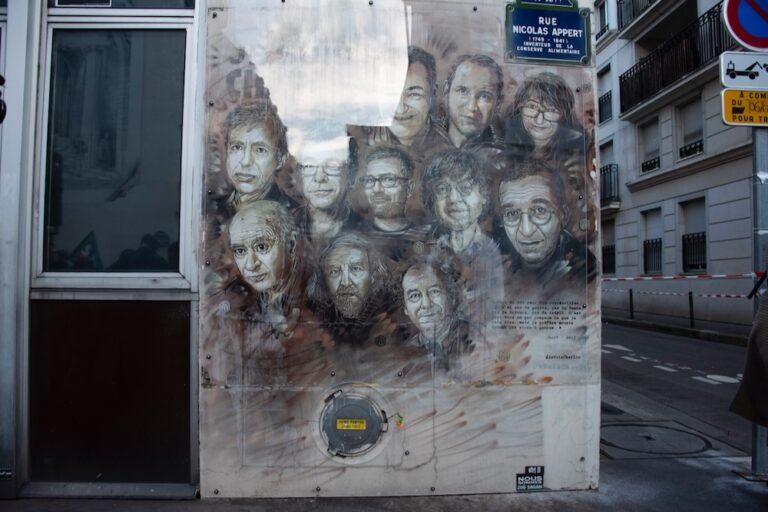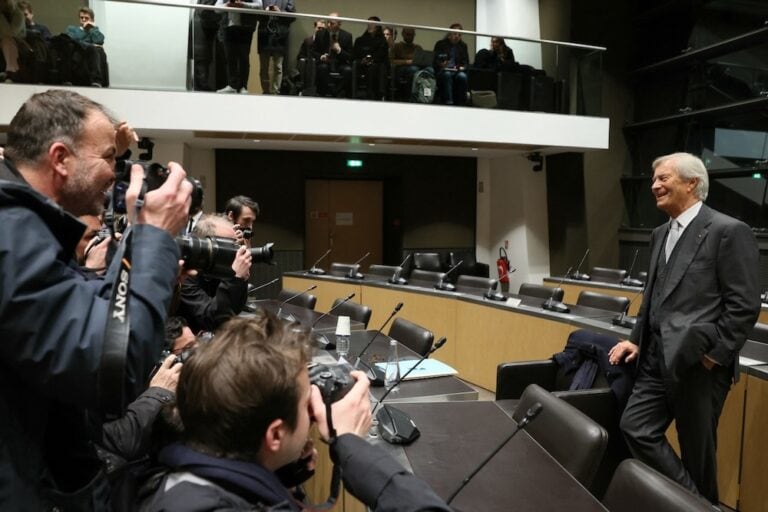(RSF/IFEX) – RSF has voiced relief after a Paris court ordered the organisation to pay only 6,000 euros (approx. US$7,400) to Diane Diaz Lopez, the heir of Cuban photographer Alberto “Korda” Diaz Gutierrez, for non-compliance with a 9 July 2003 court order banning the organisation from using Korda’s famous photograph of Ernesto “Che” Guevara wearing […]
(RSF/IFEX) – RSF has voiced relief after a Paris court ordered the organisation to pay only 6,000 euros (approx. US$7,400) to Diane Diaz Lopez, the heir of Cuban photographer Alberto “Korda” Diaz Gutierrez, for non-compliance with a 9 July 2003 court order banning the organisation from using Korda’s famous photograph of Ernesto “Che” Guevara wearing a beret. The court delivered the verdict on 10 March 2004.
“As Ms. Diaz Lopez had demanded in excess of one million euros, we think this ruling is reasonable and that it assigns an appropriate degree of importance to the offence,” RSF Secretary-General Robert Ménard said. “The sole aim of Ms. Diaz Lopez’s demands was to stifle our organisation, and the judge did not play along,” he added.
The court said in its ruling that “the excessive demands made by the plaintiff appear clearly out of proportion with the the facts of the case.”
RSF pointed out that it has repeatedly been the target of hostility from the Cuban authorities since the arrest of 75 dissidents in March 2003. RSF activists were physically attacked during a demonstration outside the Cuban embassy in Paris in April 2003, the organisation was the target of an insult campaign in the official press, and Cuba’s representatives called for the withdrawal of the organisation’s consultative status with the United Nations.
In the 10 March 2004 hearing, the Paris High Court was asked to rule on whether RSF had respected the 9 July 2003 ban on the use of Korda’s photograph of Guevara, and determine what sum the organisation had to pay Diaz Lopez.
RSF used Korda’s photograph of Guevara in a beret in June 2003 for a poster campaign drawing attention to press freedom violations in Cuba. The poster was based on the famous May 1968 poster showing a riot policeman with a baton in one hand and a shield in the other. Guevara’s face, taken from Korda’s photograph, was superimposed on the policemen’s face. The slogan for the campaign, which was to have run from 8 to 22 July, read, “Welcome to Cuba, the world’s biggest prison for journalists”.
On 3 July, Diaz Lopez filed a lawsuit in Paris seeking to ban RSF from using the photograph. On 9 July, the Paris High Court issued a summary judgment barring the organisation from “reproducing or disseminating [the disputed image] in whatever form”, and ordering the “removal and withdrawal of all existing products”. The judge set a penalty payment of 200 euros (approx. US$245) for every confirmed failure to comply with the ban.
RSF immediately withdrew the images from its website and ceased distribution of the 1,100 posters and 5,000 postcards that had been produced for the campaign. The organisation also issued a press release concerning the ban.
Diaz Lopez’s subsequent court petition was prompted by the 1 October broadcast of an interview with Ménard on LCI television’s “Première séance” programme about the film “Veronica Guerin”. During the interview, which took place at RSF’s headquarters, the Cuban campaign poster could be seen in the background on the wall of Ménard’s office.
Following the broadcast, a court bailiff visited RSF’s headquarters on 12 December to see if the organisation still had copies of the banned poster in its possession, although the 9 July court order had only required the “removal and withdrawal” of the images, not their destruction.
The bailiff found part of the stock of campaign posters and postcards, but not all of them, because some had been thrown out. Diaz Lopez’s lawyer alleged that RSF demonstrated bad faith by not only keeping the visuals, but also continuing to distribute them. Korda’s heir subsequently demanded 1,142,000 euros (approx US$1.4 million) in penalty payments for non-compliance with the earlier ruling.
A campaign to draw attention to a totalitarian regime
The RSF poster campaign targeted the approximately 120,000 French tourists who choose Cuba as a holiday destination each year, lured by the sun, its beaches and the myth of a revolution by bearded guerrillas.
The poster aimed to highlight how the Cuban revolution’s ideology, which still captivates many tourists, cloaks totalitarian practices, and how the regime uses Guevara as an icon to legitimise repression. It was also meant to show that the myth that caught the imagination of an entire generation in the 1960s had turned into something that generation hated, a police state.
The Cuban government launched a nationwide crackdown on dissent on 18 March 2003. A total of 75 dissidents were tried and sentenced to prison terms of up to 28 years for “undermining the state’s integrity and sovereignty” or its “independence”. They included 27 independent journalists, who joined the four journalists who were already detained. Cuba thereby became the world’s biggest prison for journalists (see IFEX alerts of 19 and 11 December, 13 November, 31 October, 4 and 3 September, 26, 13 and 8 August, 18 July, 6 June and 27 May 2003 and others).
The punishment for journalists who had challenged the state’s monopoly of news and information did not stop there. They were subsequently transferred to prisons hundreds of kilometres from their homes, their right to receive family visits was curtailed and they have had to endure harsh prison conditions.


